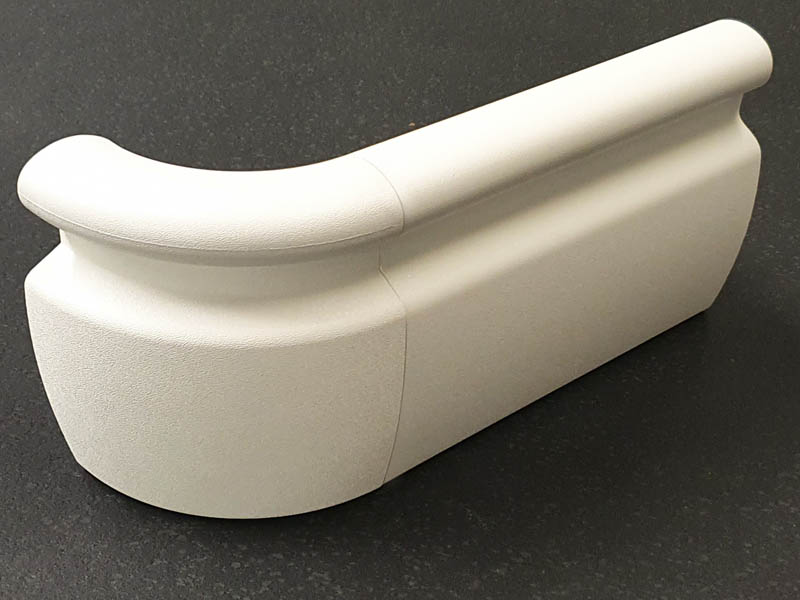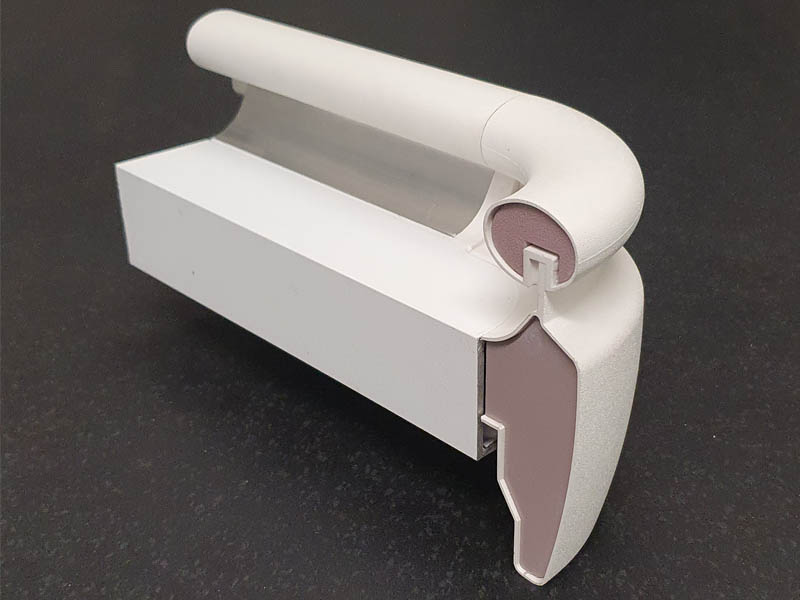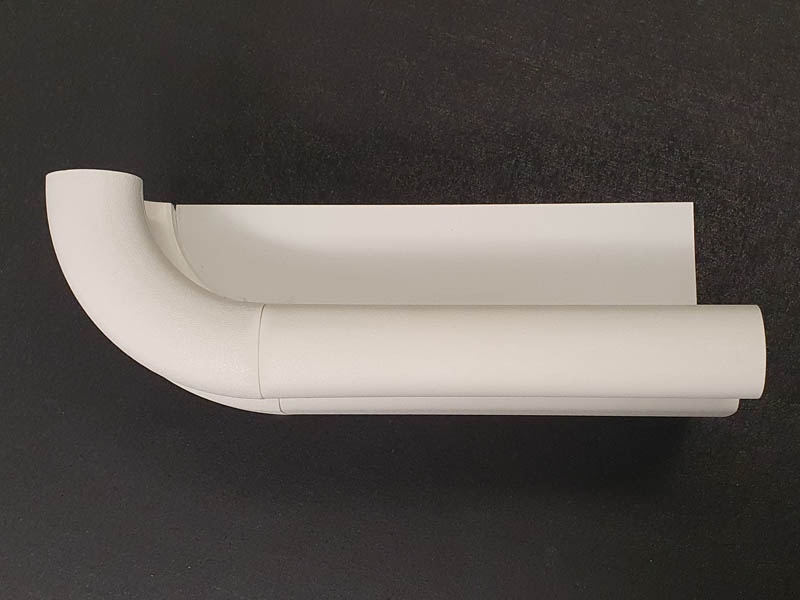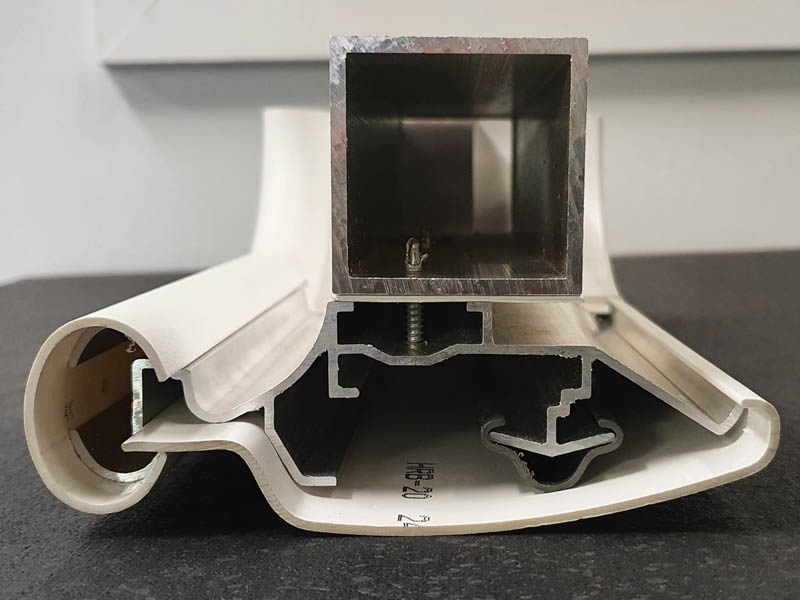The design of mental health interiors requires special attention to ligature resistant fixtures. Watch our video for a demonstration of anti-ligature handrails.
READ VIDEO TRANSCRIPT
Anti-Ligature in Mental Health Interiors: Video Transcript
Speaker: Digital Project Specialist at ABS West
{0.00}
[speaker]
Hi and welcome another video in our series aimed at anyone involved in the architecture, construction, interior design or building maintenance industries. Today, I’m going to talk about a topic that’s of a more serious nature, and that topic is anti-ligature in the context of mental health.
A ligature point is anywhere that ligature can be fastened, such as a cord or rope or any other material that has the potential to inflict self-harm. Anyone involved in the design of mental health environments needs to give special consideration to the design and quality of products used for mental health interiors.
Products deemed to be suitable for other healthcare interiors such as general hospitals or aged care, might not be suitable for mental health interiors if the physical designs include points of ligature.
A fixture that exists in almost every healthcare environment in Australia is the obligatory handrail and since this video focuses largely on handrails, I’ll use this standard handrail to demonstrate a potential ligature point.
{1.01}
[speaker demonstrates CS handrail]
Now this is a fairly typical CS handrail. It is often used in hospitals and aged care settings. It has a timber grabrail, a stainless-steel endcap and a stainless-steel bracket. As you can see, there are many points that pose ligature danger, but the good thing about CS handrails is that they can be adapted into anti-ligature alternatives, and I’ll cover that later-on in the video.
Ligature resistant products are especially important in areas where mental health patients are left unsupervised, such as in bathrooms or in toilets. When specifying for mental health projects it’s not just about avoiding obvious ligature danger points as part of their design, it’s also necessary to source robust, high-quality products. Architects, facility managers and interior designers need to determine if a fixture is robust enough to prevent it from being dismantled easily or forced apart or removed from their fixture points to form a potential weapon or implement of self-harm. Ultimately, the well-being of patients and staff is paramount in mental health environments so the challenge for specifiers is to source products that combine quality, safety and functionality.
{2.13}
[Camera focuses on AW-LR, an anti-ligature handrail installed in a mental health hospital while speaker explains case study]
Let’s take a look at the AW-LR solid timber handrail. This is case study published by Construction Specialties in Sydney. Here we can see a one-piece ligature resistant design attaches straight onto the wall, making it ideal for mental health environments.
CS handrails are one of thee most commonly specified handrails for aged care and hospital environments in Australia. As I already explained, the model I showed you is unsuitable for mental health settings, but many CS handrails can be adapted into anti-ligature models. Let me show you the difference using 3-D models.
{2.13}
[Camera focuses on HRB-20, a standard model handrail, speaker continues…]
Here I’m going to show you the difference between a standard model and its modified version suitable for mental health environments. First, I’ll show you the standard HRB-20 model, and as you can see, it contains many ligature points.
{3.05}
[Camera focuses on HRB-20AL, an anti-ligature counterpart to HRB-20, speaker continues…]
Its anti-ligature counterpart is HRB-20AL, with AL of course denoting anti-ligature which has a continuous aluminium mounting bracket used to fix and support the handrail, thereby eliminating points of ligature.
{3.19}
In terms of the ubiquitous handrail, ABS West can offer several solutions to forward thinking architects and designers aiming to minimize ligature danger. The best solution is to specify a product that number 1, eliminates the risk of ligature, number 2, is robust enough to endure the harsh treatment of deliberate attempts to sabotage the fixture, number 3, can perform it’s intended function, and in the case of handrails this means provide reliable pedestrian support and finally, number 4, is a good aesthetic fit for it’s surrounding interior space because, of course, it’s also important to uphold the overall interior design.
{3.52}
If you’ve watched right to the end, thank you for your attention towards this very niche but important design consideration. If you would like to discover more about the CS range of handrails, you can find plenty product information on our website at www.abswest.com.au or you can contact a member of our sales team who can supply technical data sheets or valuable advice. Give us a call or drop us an email. We hope you find our videos informative, and we look forward to covering more topics relating to architectural building solutions in the near future.
Thank you for watching.
{4.32}
END OF VIDEO




Interested in what ABS West is up to?
Subscribe to our Newsletter.
Submit your details and we'll add you to our mailing list:
BESPOKE SOLUTIONS
LATEST NEWS
Address: 14B Port Kembla Drive, Bibra Lake
WA, 6163
Call: +61 8 9314 4000
Email: [email protected]
Business Hours: 7am-4pm Mon-Fri
GOOGLE MAP
COLOUR DISCLAIMER: Product colours should be used as a guide only. Actual product colours can vary from the colour on your screen due to variations in monitor displays.
CONTENT DISCLAIMER: ABS West has taken all reasonable care in producing the content contained in this website. However, ABS West will not be responsible to loss or damage arising from the use of this information. The contents of this website should not be used as a substitute to detailed analysis or investigations regarding product information, or any queries the reader wishes to have answered.
